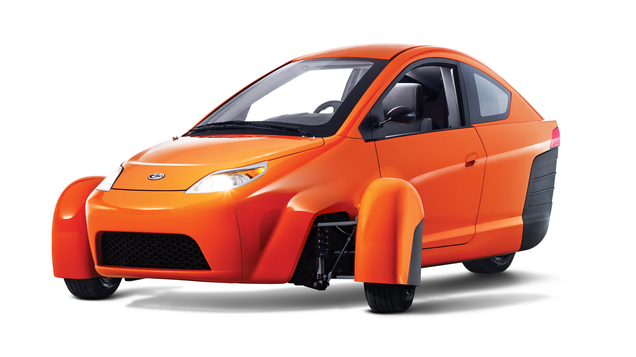
Elio Motors wants to be the next forward step in automotive evolution, offering a slim three-wheeled hyper-miler that's cheaper than any car on the market today with Prius-killing fuel economy. I've expressed my concerns about the idea, which culminated in a lengthy conversation with the start-up's CEO, Paul Elio about his ambitious and optimistic project.
The conversation below occurred on the phone and condensed.
Tavarish: Hi, Paul. Thanks for taking some time to talk to me about your project. Getting straight into it, I know you touched on this a bit on your website, but why are you developing your own engine versus using the Geo Metro/Suzuki 3-cylinder, or any other small powerplant for that matter?
Paul Elio: Well, when we started out, I don't think we had the cachet to get somebody to sell us the kind of volume of engines that we needed. Actually, I'm certain of it. Only the big guys make engines in meaningful numbers.
So I'd have to get Ford, GM, Toyota, Chrysler, or somebody to get interested enough to sell me that many motors. That opportunity just wasn't available then – it is now, but it wasn't then. That's why we went down that path – necessity is the mother of invention. Initially, we were going to re-engineer the Geo Metro motor and put it into production.
It's a pretty nice motor, but as we gunned down that path, we realized the technology has improved dramatically in 20 years. If we were to put the Geo Metro motor in the Elio, we'd get 66 miles per gallon highway, but by updating it, we'd get 84, and we're not taking any technical risk.
There's no new technology allowed on this project anywhere, because I believe that's the death knell of pre-revenue startups. Even if you bet on the right technology, if it takes you 6 or 9 months longer than you thought, bad things happen.
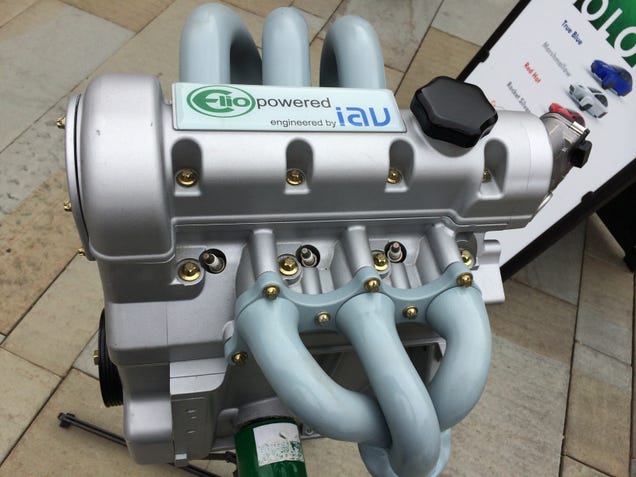
It's all modern, but not new, our variable valve lift is from Schaeffler, and it's in other vehicles today. Our throttle body is from Bosch and it's in other vehicles today. So it's top shelf stuff – it's not antiquated – but it's also not cutting edge. It sounds at first scary, a new company putting a new engine in production, kind of an undoable task, but you have to look at who's really doing it. IAV is doing the engine development.
They have 65 percent of the engineering services business in Germany. They do all the engine development for Mercedes-Benz, BMW, Bentley, Bugatti, and Elio, among others. They did the Veyron engine, and although ours isn't going to be as fast, it's going to be just as good. So they're doing the design, we're buying the machinery for the machining and assembly sequencing, designed for us by Komal.
Komal is fully owned by Fiat Chrysler, they just did the 3-cylinder lines for Ford in Europe about a year ago, so they just got done doing a very similar project for Ford. So the first day, it will be Komal employees with IAV designed engines on Komal equipment with Elio employees watching.
Then we're going to flip-flop and it'll be Elio employees assembling our engines with Komal employees watching. And at some point, we'll say "Hey, we got it from here, you can go home."
So yes, in a way, it's a new company putting a new engine in a car, but really, it's no different than Ford, GM, or Toyota doing it. It's just we're writing the check instead of them. So when you dig a little deeper and look at the partners that we have, you'll see that this is credible, this is doable. This is not a pie in the sky.
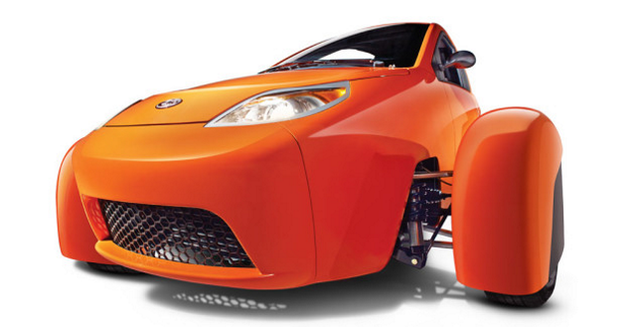
Tavarish: Where did the 84 miles per gallon figure come from? Was it after research or was it just a goal that you set for yourself?
Paul Elio: A little bit of both. I wanted it to be high mileage, and I think our initial target was 75, and then we realized we could do better. 84 was a stretch target if you will, and we're very close to hitting it. Right now, I think we're about 81.4, but we're continuing to work on the design.
So I don't know that we'll hit 84, but let's face it, if we go into production at 81, did we fail? I want to hit it because I said I would. But from a social impact and product value, anywhere in that neighborhood is going to be dandy and I know we're there.
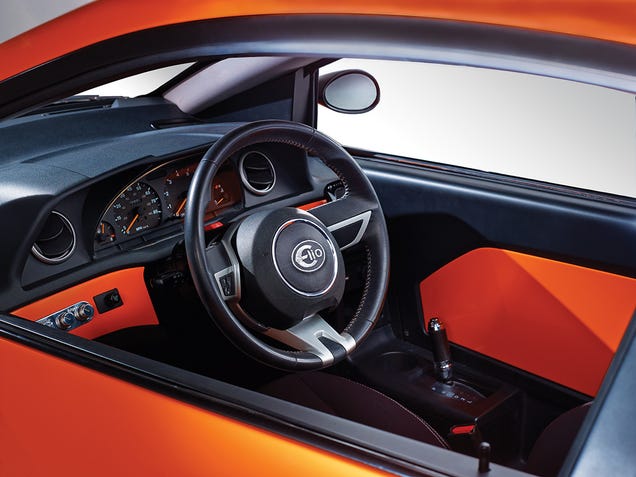
Paul Elio: I wish I had an answer for that. On fuel economy, I have a simple answer. On price, there's probably five or six large contributors that add up to a big answer, and we can walk through them. First of all is the business model. I believe vehicles are an example of content gone wild. The big guys have adopted the package system.
For example, on the Toyota Yaris, we calculated that Toyota could build 10 million unique Yarises if they wanted to. They don't do that because they don't want to cripple their inventory system, so somebody a while ago came up the the package system (LX, SX, DX), and that constrains their inventory to several hundred vehicles.
That works good for the OEMs, but it's bad for the customer. As a customer, if I want the leather seats, I have to buy the fancy radio and the fancy wheels whether I want to or not. And if you look in your vehicle right now, there's several thousands of dollars of stuff you neither need nor want.
So we're doing it differently. We're only building it two ways - standard and automatic, that's it, with the base content that 95 percent of Americans want - power windows, power door locks, air conditioning and stereo - as standard. all the rest of that content is available, it's just installed post-manufacturing.
So if you want the blind spot detecting mirrors, and I do, I love those things, you can get that on your Elio. If you want a power leather seat - Lear is our seating supplier, they make a bajillion of those every year - you can get that. Pick your option, we have it. But we put it on after we've made the vehicle. So the process is, you walk into our retail center and say "I want the orange automatic with leather seats and blind spot detecting mirrors."
We have seven marshaling centers - it goes off to the proper marshaling center - and that content gets added to your vehicle. We close our stores at 9PM, and we build out vehicles until midnight, so we have three hours to clear the system. They go on trucks and with seven marshaling centers, we're within nine hours from all of our facilities.
So theoretically, at 10 AM the next day, you get the vehicle exactly the way you wanted it the day before, no matter what time you walked in the store. Now, we'll probably promise something like 2 PM, because there's snow, traffic, and stuff like that, but it will definitely be next day. So that saves a ton of money, because you're not paying for the stuff you didn't want on the vehicle.
Second is how the vehicle is designed. The traditional auto manufacturing model is everything is segregated to components with the line between components being very rigid and they optimize on the component level.
An example of that, when I was a budding engineer, I was designing a seat bracket and I showed an OEM I could save them something like a dollar and a pound if they moved their bolt hole over one inch. And the OEM said "No, the hole is where the hole is, you make it work." I said "I can make it work, it's just going to cost you a dollar and a pound." They do that to commoditize things.
We design the vehicle in a series of what we call "Supplier Summits", where all the suppliers get together and work on the vehicle as a group for three days. Normally, these suppliers are never allowed to talk to each other, and the summit is the first time they've ever been in the same room.
So any suppliers that are around have breakout sessions with Elio Motors, because sometimes the answer is to charge me three dollars more for an airbag because I can save five dollars on the frame if we go this way.
So as we go through the design, we're optimizing on the vehicle, rather than the components, because my customer doesn't care what the seats cost, they care what the vehicle costs. So if it costs me $10 more for the seat, but I can save $20 somewhere else, they're delighted, they don't care how much the seat was.

Tavarish: I understand that argument with production cars, but with motorcycles, I'm not sure you would have too much of that. As far as the price point of a trike versus even a 600cc motorcycle from one of the established manufacturers who do have the distribution channels in place that can get the prices to a place where it's profitable for each one, for a startup company to have a $6800 price tag, to me, seems a little far-fetched.
Paul Elio: Right. And part of that is volumes. The seat framing that we're using is in a bunch of other vehicles already. The brakes we're getting are in a bunch of other vehicles already. So you have these enormous automotive volumes and there's an enormous research and development budget that's spent on them.
And a motorcycle just doesn't have that kind of horsepower behind their products, so maybe Honda and Sukuzi are sharing brakes because they have a similar supplier, but the combined volume and the combined R&D money spent on that product versus me sharing with a few of these global companies, it's apples and oranges. Just think about what you get with a Harley for $20,000, and look what you can get for the same money with a car. You just get a lot more.
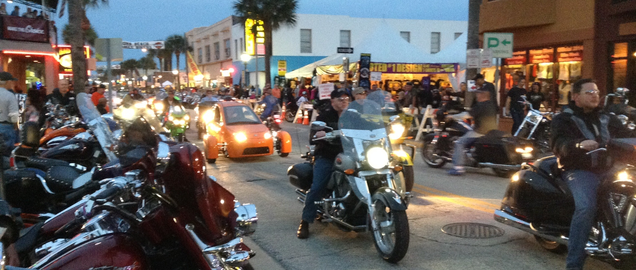
Tavarish: I've owned many scooters and have been around motorcycles for quite some time, and I understand that there are different technologies there, which does account for some of the price difference, for example aluminum frames and highly-strung miniaturized race engines on sports bikes. For the Elio, I think the claim is a little lofty. If you had said "This is going to be less than $10,000", it would be a little more palatable, but $6800 seems too good to be true.
Paul Elio: In all honesty, it's a stretch target. And at full disclosure, we're about $500 over budget today. If we went into production immediately, it would be 81 miles per gallon, and $7300. I don't view it as a failure, and we're working hard to hit our numbers because I think we have a decent shot of doing it.
That number isn't made up, we have every single part that's required to make this vehicle, we have 87 percent quoted by part number and 98 percent by dollar value. So we can do this, I have the data to back it up.
In the next article, I'll talk to Paul about how expensive it is to start a car company, and if his financial goals are realistic with major factors such as legislature and the volatility of consumer demand.
Tavarish is the founder of APiDA Online and writes about buying and selling cool cars on the internet. He owns the world's cheapest Mercedes S-Class, a graffiti-bombed Lexus, and he's the only Jalopnik author that has never driven a Miata. He also has a real name that he didn't feel was journalist-y enough so he used a pen name and this was the best he could do.


No comments:
Post a Comment